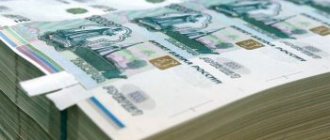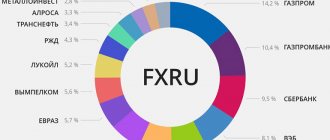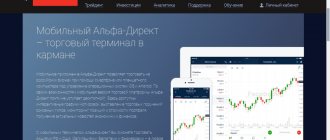What do you know about Norway? A small Scandinavian country. The area of the occupied territory is comparable to Buryatia. Population: about 5.3 million people. The retirement age for citizens is 67 years. And regardless of gender.
The basis of the economy is gas and oil production. Income from the sale of which accounts for more than 50% of all exports.
Norway began its oil journey in 1971. From the discovery and development of oil fields. And every year it increases the extraction of minerals.
A familiar economic model. Don't you find it? Reminds me of Russia.
Oil surplus
Norway's State Global Pension Fund (the Norwegians themselves also call it the Oil Fund) is one of the unique things in the modern economy.
It was created a quarter of a century ago so that windfall profits from oil and gas exports would go not only to living Norwegians, but also to future generations. Due to extremely high prices at the beginning of the 21st century, the fund grew rapidly and eventually reached incredible proportions. Suffice it to say that he owns about 1.3 percent of all stocks in the world (!), and this does not take into account the fact that the fund also invests in bonds and real estate. To put it quite simply, the money received from the export of oil and gas began to help Norwegians earn money in industries that had nothing to do with the oil and gas industry. For example, every time Apple successfully releases a new iPhone, future generations of Norwegians become a little richer (the fund actively invests in Apple). True, this also works in the other direction - in 2014, the fund lost 40.9% on investments in Russia (this did not particularly affect the fund - investments in Russian stocks account for 0.4 percent of all investments).
The Norwegians own the largest Stabilization Fund in the world: their reserves are estimated at $830 billion. By comparison, Russia's National Welfare Fund (NWF) and Reserve Fund, modeled after Norway's and already largely spent, hold about $150 billion. And this despite the fact that Russia produces five times more oil and gas per year.
Fund return
For the period from 1998 to 2021, the average annual return of the Norwegian Fund was 5.9% per annum.
With current capitalization, we get a profit of $60 billion annually.
That works out to almost $1 thousand per brother (each resident) monthly. The whole of Norway could decide to stop working one day. Go to some inexpensive country and live modestly on the income you receive!!! Entire life.
Profit of the fund as a percentage.
Columns—return by year. The line is the accumulated average annual return. However, if you adjust the income received for inflation and subtract management costs, the real profit decreases from 5.9% to 4% per annum. But also money. $40 billion a year is not lying around. )))
The need for reserve funds[edit | edit code]
Reserve funds are created in those states whose budget is highly dependent on market factors, as a rule, world prices for raw materials. In addition, some countries accumulate funds in such funds for the period when the mineral resources are depleted.
The reserve fund performs two functions. Firstly, its funds can be used to cover the state budget deficit at a time of unfavorable market conditions. Secondly, during a period of high prices for raw materials, the fund allows you to accumulate excess export earnings and prevent the development of the Dutch economic disease.
The thesis about excess export earnings may seem paradoxical. An increase in export earnings usually leads to a rapid strengthening of the national currency. In itself, such a strengthening is not a threat to the economy, however, constant fluctuations in exchange rates following fluctuations in price conditions create macroeconomic instability and do not allow companies to choose a specific strategy - to adapt to a low or high exchange rate. In addition, in conditions of high administrative barriers and strong monopolism (which is typical for most resource-exporting countries), an increase in export earnings leads to increased inflation.
In addition to purely economic tasks, the reserve fund fulfills the political task of preventing the rapid growth of government spending. Government spending, as a rule, cannot be quickly reduced following a drop in income. As a result, during periods of unfavorable economic conditions, this can lead to large state budget deficits, failure to fulfill promised social obligations and default on government debts. Such consequences are much more destructive for the economy than fluctuations in the volume of the state budget themselves.
The need to create reserve funds is debatable. A number of economists and politicians believe that it is more effective not to keep money in reserve, but to use it for import purchases that work for the future of the country: for example, buying patents and equipment, paying for student education abroad, etc. This tactic allows you to avoid the negative consequences of a favorable conditions without resorting to actual freezing of funds in the reserve fund.
Let's summarize
Western economists have long realized that by forcing funds to trade only on the national market, they only make matters worse. Moreover, no one in the world invests the longest-term money (pension fund) in low-yielding assets, because a well-diversified portfolio is a reliable insurance against crisis and collapse.
The Western Pension Fund is a full-fledged participant in exchange trading; domestic is a structure completely controlled by the government, the money in which is simply eaten up by inflation. Hence the main reason for the crisis in the Russian pension system is the lack of money.
Norway has been making money on this money for decades, why not just copy a good, and most importantly working, scheme, as the Chinese do?
Therefore, it’s time to listen to the press secretary of the Russian President Dmitry Peskov, who gave the following advice: “In old age, you need to rely only on yourself.” There is no chance that the management strategy will change.
Strict control
There are special and rather strict rules for investments from the Oil Fund. In particular, it is prohibited to invest money of future generations in companies involved in nuclear weapons or cigarette production. Officials are prohibited from getting into the fund to finance the budget: each year they can take only four percent from it, but they almost never use this right to the maximum. As a result, the fund is replenished even at low oil prices - money poured into it in both 2014 and 2015, although oil prices fell by more than half.
The reserve fund and the aggregate demand of the nation[edit | edit code]
Also, the reserve fund is a macroeconomic instrument of the state to maintain aggregate demand at the Keynes point and long-term economic growth. The state, in its macroeconomic policy, restrains the aggregate demand of the nation in moments of rapid economic growth in order to contain inflation, and stimulates demand in years of stagnation, when purchasing activity falls. During years of stagnation, the government may spend more money than it collects in taxes. This will increase the total spending of the nation, allowing businesses not to reduce production of goods and services and not to lay off their employees. On the contrary, at a time of demand inflation, the government reduces government spending so as not to stimulate price increases. The state can store the difference in income and expenditure of the total budget in a reserve fund or borrow in foreign currency.
Reserve funds in different countries[edit | edit code]
USA (Alaska)[edit | edit code]
The Alaska Permanent Petroleum Fund was created in 1976 following a referendum among state residents. 25% of the funds received by the state government from oil companies (taxes, drilling licenses, fees for using the oil pipeline) are allocated to the fund, and part of the profits goes to dividends to Alaska residents.
At the end of 2005, its volume amounted to $32 billion, and dividends amounted to $845 per person. The fund's return over the past five years has been 5.78%. The portfolio includes US stocks (35%), US bonds (25%), foreign securities (22%), real estate (10%) and other investments (8%).
Azerbaijan[edit | edit code]
The State Oil Fund of Azerbaijan was founded on December 29, 1999. The fund concentrates funds received from the export of oil and gas, as well as from the financial activities of the fund itself. As of April 1, 2010, the fund contains funds totaling 16 billion 243 million 300 thousand dollars.
Venezuela[edit | edit code]
In 1998, the Macroeconomic Stabilization Fund was created in Venezuela. Initially, the criteria for filling the fund were formulated quite strictly: if the world oil price exceeds the standard ($14.7 per barrel), then every dollar in excess goes into the fund. Subsequently, the rules for transferring funds to the fund changed, and the state budget was reduced to a constant deficit. By 2003, they managed to accumulate $2.59 billion, but the government of Hugo Chavez soon spent this money and now the fund does not actually function.
Honduras[edit | edit code]
The country's Ministry of Economy announced the creation of such a state fund in 2002. By 2006, it turned out that the fund contained only 250 million US dollars, which is a fairly low amount even for such a poor country as Honduras. In 2007, the authorities announced that they would not send money to the fund, but non-perishable goods: grain, cereals, coffee, building materials, porcelain, sugar. You can buy these goods from the fund in long-term installments with an overpayment. It was also stated that a number of museum valuables would be reserved for storage in the fund, but without the right to sell.
Kuwait[edit | edit code]
There are two funds in Kuwait - the Budget Reserve Fund (since 1960) and the Reserve Fund for Future Generations (since 1976). 10% of government revenues (regardless of their origin and oil prices) are transferred to the Fund for Future Generations. By the end of 2004, the volume of both funds reached $80 billion (about 170% of GDP). The nature of the placement of the funds' funds is not disclosed, although it is known that the money is invested in securities of developed countries. It was from these funds that Kuwait financed the reconstruction of the country after the 1990-1991 war.
Nigeria[edit | edit code]
In September 2004, the country's government decided to create a Stabilization Fund and transfer 50% of the oil excess profits for the previous year to it. However, already in November of the same year, $280 million was withdrawn from these funds, which were spent on compensating citizens for their gasoline costs. The fund never began to function.
Norway[edit | edit code]
In Norway, the State Oil Fund was created in 1990. It serves as both a stabilization fund and a “fund for future generations.” The procedure for filling the fund is determined by the government and approved annually by parliament; about half of the oil revenues of the state budget go into it.
At the beginning of 2015, the fund had accumulated more than $800 billion. The return on the Oil Fund in 2005 was 8.58%. On average over nine years it amounted to 4.47%, and in 2001-2002 the fund suffered losses. About 46% of the fund is invested in stocks and the rest in bonds.
The Norwegian government has a very strict policy of replenishing the State Oil Fund. As a result, the relationship between the influx of petrodollars and budget expenditures has even become inverse: the higher oil prices, the lower budget expenditures, and vice versa.
On Tuesday, September 19, 2021, the world's largest sovereign oil fund, Norway, reached $1 trillion for the first time.
This was announced by the National Bank of Norway, which manages the fund, AFP reports.
This amount is about $189 thousand for each of the 5.3 million people living in Norway. The fund recorded a record thanks to the improvement of the world's major currencies against the dollar and the good situation in the stock market.
Oman[edit | edit code]
In Oman, the State Reserve Fund was created in 1980, and in 1993, the Oil Fund was also created. At the same time, all oil revenues at a price of up to $15 per barrel go to the budget, the next $2 per barrel - to the State Reserve Fund, the next $0.5 per barrel - to the Oil Fund, and at a price above $17.5 per barrel, excess oil revenues again go to budget. However, it was never possible to fill the funds, since their funds were constantly used to cover the budget deficit.
Russia[edit | edit code]
In Russia, the Stabilization Fund has existed since 2004. Government revenues from oil production and export (in terms of export duties and mineral extraction tax) are transferred to it when the world price of oil exceeds a specially defined “cut-off price”. That is, the state budget receives funds as if the price of oil was equal to the “cut-off price,” and everything in excess goes to the Stabilization Fund. Initially, the “cut-off price” was set at $20 per barrel, then it was raised to $27 [ source not specified 3252 days
].
As of January 30, 2008, the Stabilization Fund contained $157.38 billion (RUB 3,851.80 billion)Ministry of Finance
From February 1, 2008, the stabilization fund was divided into two parts: the Reserve Fund $125.41 billion (RUB 3,069 billion) and the National Welfare Fund $31.98 billion (RUB 782.8 billion).
Since 2013, the so-called budget rule has officially come into force, determining the maximum level of budget expenditures based on the price of oil.[1]
From January 1, 2021, the Reserve Fund was liquidated and merged with the National Welfare Fund[2][3].
Chile[edit | edit code]
The Chilean Copper Stabilization Fund was created in 1985. Every year, the Chilean Ministry of Finance sets an indicative (base) price for copper. If the real export price exceeds it, then the excess income is transferred from the budget to the fund. At the beginning of 2006, the fund had accumulated over $1 billion.
Ukraine[edit | edit code]
In March 2021, the Cabinet of Ministers of Ukraine developed a set of amendments to the state budget, one of which was the creation of a stabilization fund for 124 billion hryvnia under the control of the Ministry of Finance. Funds from the fund will be allocated to support doctors, fight the COVID-19 epidemic, help such categories of the population as pensioners and those who have lost their jobs, as well as stabilize the country’s economy. Accurate data on the stages of filling the fund and its current state is not yet available. [4] [5]
Where's the money, Karl?
Where are Norwegian pensioners' funds invested?
Fund structure by asset class:
- 66% invested in shares;
- 27% in fixed income bonds;
- 7% - real estate.
Norwegians invest in shares of 9,153 companies from 73 countries. The fund owns a 1.4% share of all companies traded on the stock market.
The fund's largest investment.
Why is this important for the world's economy?
The oil fund is one of the largest, predictable and adequate investors on the planet, which is ready to give money (that is, money for decades). To finance the budget, the fund will sell shares of the same Apple, which could lower the capitalization of the iPhone manufacturer. And along with it - the capitalization of 9,000 other companies around the world in whose securities Norway invested.











